Supersonic interceptors P. O. Sukhoi. Part IV
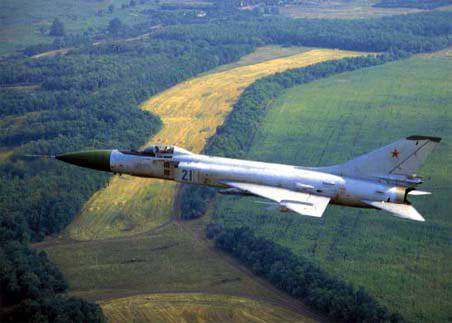
In the air regiments of the Su-11, they served until the middle of the 70-s and were gradually superseded by the MiG-23P and the MiG-25. The few Su-11s were the transitional machine between the first in practice Sukhoi Design Bureau supersonic interceptor and the more advanced Su-15, which earned the title of "classic" in air defense. The rapid withdrawal from serial production, which was caused by problems with the reliability of the Su-9 marines, did not bother P. O. Sukhoi, but on the contrary, stimulated him to develop a new machine.
Naturally, the search for an alternative power plant, and more than that of the AL-7F-2, was started. Almost at the same time, at the turn of 1959, the design bureau began to design a heavy T-37 fighter with a TRX Р15-300 and an interceptor П-1 with a power plant consisting of one AL-9. In the same period, tested and aircraft T-5, which was the development of T-3-51. He retained the wing, tail, nose and central parts of the base aircraft, but differed from him in a power plant consisting of two P-11F-300 engines designed by the Tumansky Design Bureau (similar engines were installed on the MiG-21). In 1958, the tests of the T-5 began. At the same time, the new machine was not considered by Dry as a ready interceptor, it was an exclusively experimental aircraft. T-5 had a lot of limitations due to rear alignment, so it was not possible to fully disclose its capabilities in all modes. One thing was certain, the new aircraft had a great power supply and rate of climb.
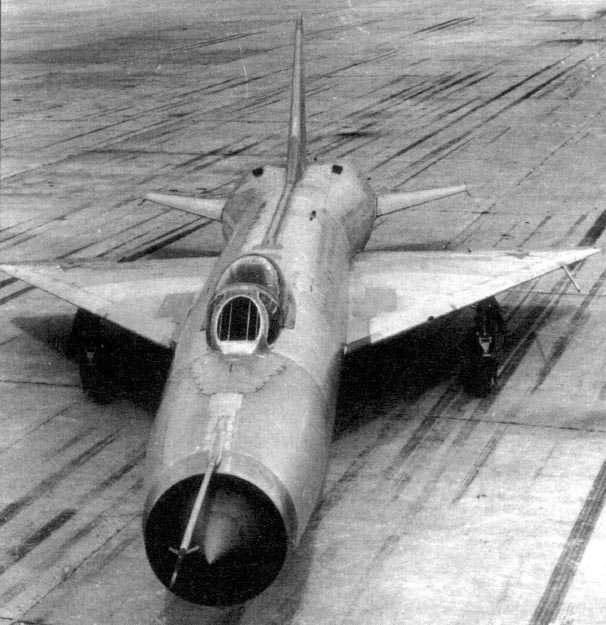
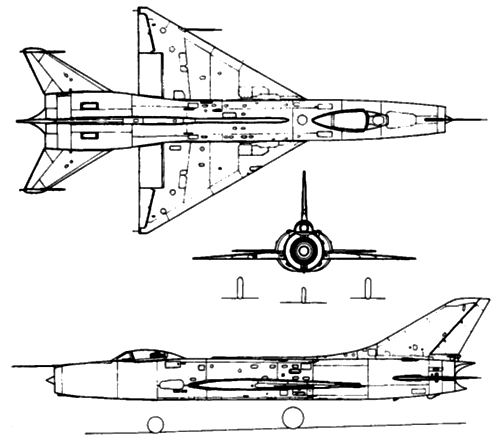
Interestingly, a similar evolution took place some time later through the experienced single-engine interceptor E-150 of the OKB A. I. Mikoyan, on which the Р15-300 engine was replaced by a R-11F-300 engine. The new Mikoyan aircraft received the name E-152, and its scheme was identical to that of the T-5 (a common axisymmetric air intake in the forward fuselage, two engines in the tail section and a delta wing of small elongation). In addition, at the end of 60-ies in China built a heavy interceptor, also performing it on the type of T-5 and with the same engines P-11-300. As you can see, the T-5 scheme was rated as very promising, but P. O. Sukhoi went even further.
During the creation of the T-5, a separate group of OKB-51 specialists investigated the possibility of using more advanced radar equipment and air-to-air missiles. As you know, in those years, the level of technology provided an increase in the detection range only by increasing the diameter of the antenna and increasing the power of the radiator, which entailed an increase in mass and size. But the new stations and missiles could provide interception of targets from the front hemisphere, which did not allow the characteristics of the Su-9 and Su-11 base complexes. Establish the same station, larger and more powerful than the "Eagle", with the scheme of the aircraft with a nasal air intake was no longer possible. Therefore, the design bureau began to design an experimental aircraft with side air intakes.
Work continued at a good pace in all areas of development of the air defense interceptor line until the Khrushchev missile period began. As a result, funds for aviation development has fallen sharply. In 1958 alone, 24 topics on the development of new aircraft and 12 topics on aircraft engines were stopped. In 1959, another 21 and 9 topics were closed, respectively. Previously, each proposal of the Sukhoi Design Bureau was accepted by the SCAT and generously financed, but now it was necessary to dodge in order to receive any funds for the continuation of work. Because the modernization of existing aircraft systems has not yet been limited, and this is precisely where many aircraft design bureaus found a solution at that time. Therefore, OKB-51 officially began the development of a new machine under the T-58 code as part of the modernization of the T-3-8M complex.
For the new machine was proposed two options for the development of radar OKB-339. This is the "Eagle-2", the development of the station "Eagle" that is installed on the Su-11. And a completely new radar "Whirlwind", which is the development of the station "Smerch", which in turn was developed for the patronizing interceptor Tu-128. Both stations could only be installed on an aircraft that had a nose part of the fuselage freed from the air intake device.
Dry P.O. For the new interceptor, a scheme was chosen with two side rectangular air intakes with a vertical braking wedge. At that time in the Soviet Union, such an air intake device was developed for the first time, and Pavel Osipovich was at great technical risk. If the nose and center of the aircraft were new, then the tail, starting with the 18 th frame, was borrowed from the Su-11. From it, the wing, the plumage and the AL-7F-2 engine with a control system were completely taken. As you can see, during this period, the creation of a new interceptor can really be viewed precisely as a modernization of the Su-11.
In November, the 1960 of the year received a resolution of the Council of Ministers to create an Su-15 interceptor with the Whirlwind Radar and armed with new K-40 air-to-air missiles. The interception complex with the new machine was supposed to be based on the “Fly” automatic control system and received the name Su-15K-40; the “modernization” name T-3-8М was also used. In December, the 1960 of the year began assembling two copies of the aircraft. In parallel, bench tests of the power plant with side air intakes were conducted. However, the government decision took a long time to agree, and the question of the composition of the equipment again “hung in the air. Therefore, work was continued on the version of the aircraft, which has an Orel-2 radar and a K-8М2 rocket. The name Su-15 does not appear in the documents of that time, the interceptor is everywhere called Su-11M. In the summer of 1960, work on the T-58 is temporarily stopped.
In the same period, another version of the interceptor is being worked out in the Sukhoi Design Bureau, which no longer has much continuity with the Su-11 with the exception of the wing and tail unit. The new machine is considered as part of the Su-15-40 interception system. The developed interceptor uses the nose and central parts with side air intakes and the Whirl-P radar, from the first version of the Su-15, and the tail section layout is designed as an T-5 aircraft with two P-11-300 engines. The armament was to consist of two K-40 missiles. This option was recognized as more promising, since it excluded the use of the AL-7F engine, which had already damaged serial production of the Su-11.
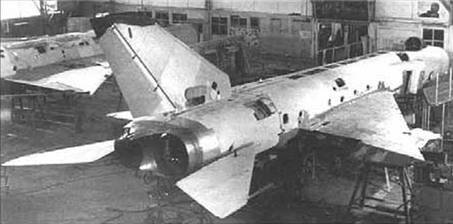

Experienced aircraft have already laid on the stocks, however, the leadership of the Air Force and the State Committee for Aviation Technology still could not come to a unified solution. The military demanded an interceptor with a Smerch-type radar and K-40 missiles, while the industry insistently suggested that the Eagle radar and K-8М2 missiles be limited. At the same time, the military proceeded that when intercepting high-speed targets in a wide range of heights, the interceptor would not have sufficient speed advantage to guarantee entry into the rear hemisphere. Therefore, it was supposed to intercept on a collision course, and only the Smerch radar and the K-40 missiles could ensure this. The method of defeating targets reaching above the interceptor was tested on the Su-11. The interception of low-altitude targets was limited to radar, which did not provide for the detection of targets against the background of the earth. In order to increase the capabilities of the complex, it was decided to even more automate all interception stages by equipping the interceptor with a control system with blocks of course commands and optimal climb programs.
The Council resolution 5 of February 1962 on the adoption of the Su-11-8М interception complex indicated: "In order to improve the combat characteristics of the complex, upgrade the Su-11 aircraft to ensure attack targets flying from 2 to 24 km with speeds up to 2500 km / h, in the front and rear hemispheres, as well as further improving the reliability, noise immunity and automation of the complex. " This decree finally legalized the work on T-XNUMHD. And in April, the first copy of the T-58D-58 was ready. This was still an experimental machine, there was no weapon system on it, its place was occupied by control and recording equipment. During the year, the aircraft performed 1 flights, in which the work of the side air intakes was worked out, and the flight characteristics were taken. The power plant of the two P-56F-11 showed its reliability and confirmed the correctness of the chosen P.O. O. Sukhy way. During the test period, the aircraft continued to be called Su-300M.
In the fall of 1962, the GKAT approved the composition of the weapons system for the new interception complex. The plane was to receive a Smerch-AS radar and two K-8М2 missiles (one with radar seeker, the second with heat). Thus, in the air defense system, the unification of radar stations of advanced air defense interceptors (future Su-15, Tu-128, MiG-25П) was achieved. Due to the fact that the manufacture of the Smerch-AS radar was delayed, P.O. Sukhoi insisted on the possibility in the first series of the aircraft to establish an on-board complex with the Orel-D radar.
In 1963, the third copy of the T-58D-3 was built. It differed from the previous experimental machines increased to 6585l. fuel supply and a larger tail area. The plane also received and more perfect autopilot AP-46. At the airfield of the Scientific-Research Institute of the Air Force in Vladimirovka, tests of the weapons complex were conducted. At the same time, the interceptions of the Yak-25РВ, Il-28, Su-9Л and Tu-16 aircraft were worked out. The report on the interim results of the tests indicated: "... On 01.12.1963 during the GSE 87 flights were performed, of which 53 are valid, 13 are training, 16 are not valid and 5 are overflights and flights. The complex has been completely defined to test combat capabilities when attacking at the PPS with K-98 launches against real targets ... "During the entire test period, there were no specific technical problems and complaints from the customer, which was very rare.
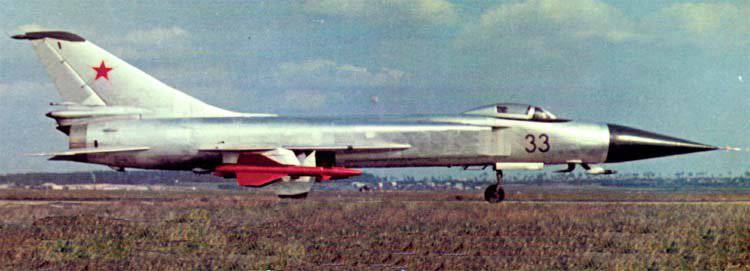
In the 1964 year, after receiving the K-8М1П missiles (they later received the K-98 cipher), the interception training on the heading courses began. With the exception of not entirely sustainable destruction of high-speed targets, the weapons system as a whole has proven to be highly effective. The cause of this problem was in the Snegir-M radio fuse, which at high opposite speeds decelerated, and the target had time to move away from the effective defeat zone. The fact that the task would be solved as a whole was not in doubt, but according to the results of the tests it was noted that when firing in the forward hemisphere, the T-58 confidently hits targets with speeds up to 1200km / h.
The requirements for flight range were not fulfilled. The military asked 2100km, and in fact there was 1260km. Acceleration characteristics have decreased in comparison with Su-9. To increase the flight range, it was decided to remove the “waist” from the aircraft, which was designed in accordance with the “area rule”. Thanks to the triangular wing of the small elongation, aerodynamics has not deteriorated. Moreover, to the surprise of all, it turned out that overclocking characteristics even improved and were almost equal to the data of Su-11
State tests ended on 25 June 1964 of the year. The Test Act stated: "... the Su-11-8М interception complex (1 modification stage) ... it withstood the tests, according to its characteristics, basically meets the requirements of the Air Force and is recommended for use ... The complex has advantages over in service ... in particular, the possibility of intercepting in the forward hemisphere appeared, as well as increased flight safety, increased range of detection and capture of targets, reduced the lower limit of combat use altitude in the rear hemisphere to 500 m (instead of 8 km) and increased radar immunity. " The interception complex was adopted on April 30 of the year 1965. The complex received the name - Su-15-98, interceptor - Su-15, radar station - RP-15, rocket - P-98.
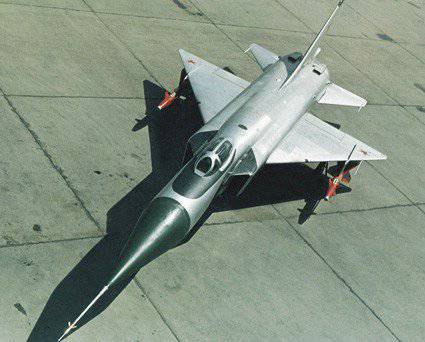
Sources:
History designs of aircraft in the USSR 1951-1965
Engine. No.60.
Aviation and cosmonautics. 1995. No.6.
Aviation and time. 1998. No.6.
Aviation and time. 2003. No.1.
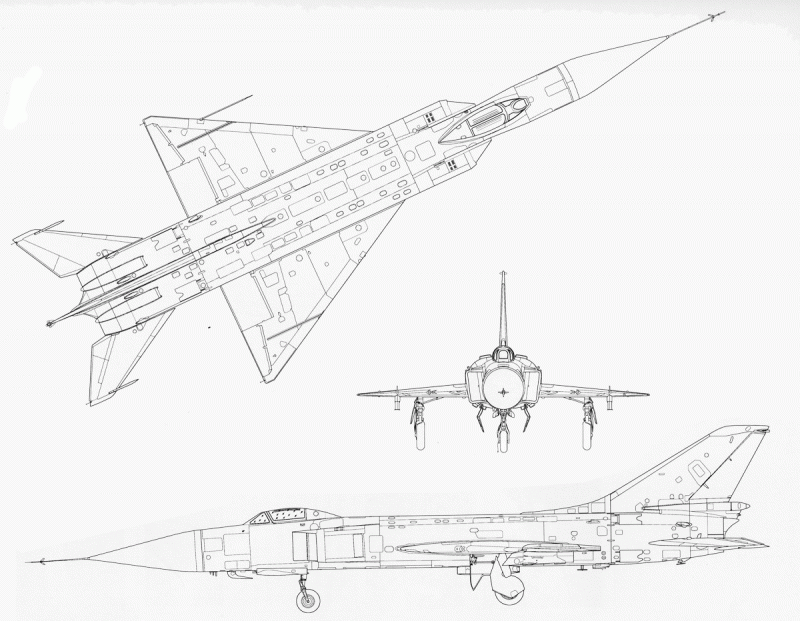
Information